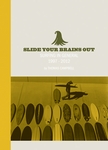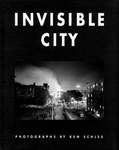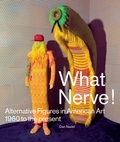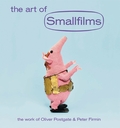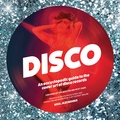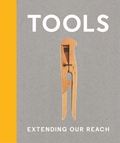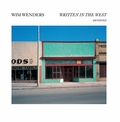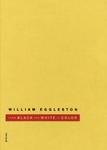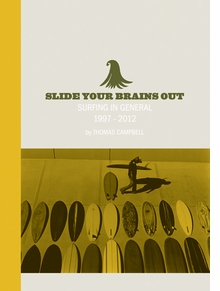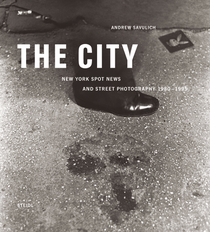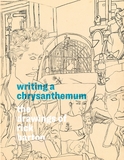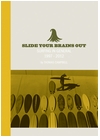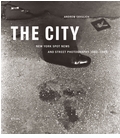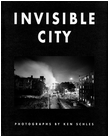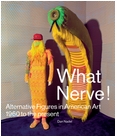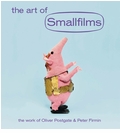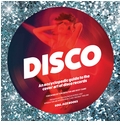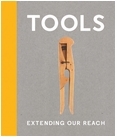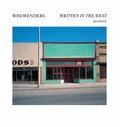ARTBOOK BLOGEventsStore NewsMuseum Stores of the MonthNew Title ReleasesStaff PicksImage GalleryBooks in the MediaExcerpts & EssaysArtbook InterviewsEx LibrisAt First SightThe Artbook 2024 Gift GuidesArtbook Featured Image ArchiveArtbook D.A.P. Events ArchiveDATE 4/10/2025 NYPL presents Joshua Charow on 'Loft Law: The Last of New York City's Original Artist Lofts'DATE 3/31/2025 Poster House presents Tomoko Sato and Mỹ Linh Triệu Nguyễn launching 'Timeless Mucha'DATE 3/29/2025 Artbook at Hauser & Wirth Los Angeles presents Jeffrey Schnapp and Peter Lunenfeld launching Bruno Munari's 'Fantasy'DATE 3/29/2025 Artbook | D.A.P. Sample Sale at Ursula BookshopDATE 3/27/2025 “Johanssonian democracy” from a true photographer’s photographerDATE 3/27/2025 Long live 'STUFF'!DATE 3/20/2025 192 Books presents Stephen Cassell, Kim Yao, Adam Yarinsky & Miko McGinty on 'Architecture. Research. Office.'DATE 3/20/2025 She Knows Who She Is…DATE 3/18/2025 Say yes to utopia! Last day to support 'Archigram: The Magazine' facsimileDATE 3/16/2025 Mitch Epstein's take on power and climate changeDATE 3/15/2025 See the world anew with 'Just Looking'DATE 3/14/2025 BOOKMARC presents Kim Hastreiter launching STUFFDATE 3/13/2025 Chef's kiss for 'Wicked Arts Education' | STAFF PICKS | FROM THE SHELVES
| ||||||||||||||||||||||||
STATUS: Out of stock indefinitely. |
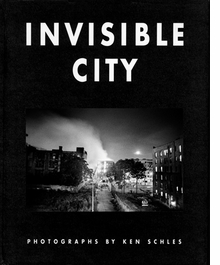 Ken Schles: Invisible City
Ken Schles: Invisible City
Published by Steidl.
Text by Lewis Mumford, Jorge Luis Borges, Franz Kafka, George Orwell, Jean Baudrillard.
"An essential companion to the new, long-awaited reprint of Schles' gritty 1988 classic Invisible City.” –Mark Murrmann, Mother Jones
PUBLISHER
Steidl
BOOK FORMAT
Clth
PUBLISHING STATUS
Pub Date 2/24/2015
Active
DISTRIBUTION
D.A.P. Exclusive
Catalog: FALL 2014
PRODUCT DETAILS
ISBN 9783869306919 TRADE
List Price: $40.00 CAD $54.00
AVAILABILITY
Out of stock
STATUS: Out of stock Temporarily out of stock pending additional inventory. |
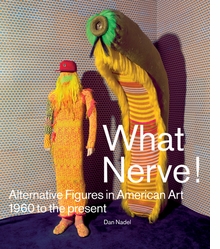 What Nerve!
What Nerve!
Alternative Figures in American Art, 1960 to the Present
Published by RISD Museum of Art/D.A.P..
Edited with text by Dan Nadel. Text by Robert Cozzolino, Dominic Molon, Roger Brown, John Smith, Naomi Fry, Michael Rooks, Nicole Rudick, Judith Tannenbaum.
What Nerve! reveals a hidden history of American figurative painting, sculpture and popular imagery. It documents and/or restages four installations, spaces or happenings, in Chicago, San Francisco, Detroit and Providence, which were crucial to the development of figurative art in the United States. Several of the better-known artists in What Nerve! have been the subject of significant exhibitions or publications, but this is the first major volume to focus on the broader impact of figurative art to connect artists and collectives from different generations and regions of the country. These are: from Chicago, the Hairy Who (James Falconer, Art Green, Gladys Nilsson, Jim Nutt, Suellen Rocca, Karl Wirsum); from California, Funk artists (Jeremy Anderson, Robert Arneson, Roy De Forest, Robert Hudson, Ken Price, Peter Saul, Peter Voulkos, William T. Wiley); from Detroit, Destroy All Monsters (Mike Kelley, Cary Loren, Niagara, Jim Shaw); and from Providence, Forcefield (Mat Brinkman, Jim Drain, Leif Goldberg, Ara Peterson). Created in collaboration with artists from these groups, the historical moments at the core of What Nerve! are linked by work from six artists who profoundly influenced or were influenced by the groups: William Copley, Jack Kirby, Elizabeth Murray, Gary Panter, Christina Ramberg and H.C. Westermann. Featuring paintings, sculptures, drawings, prints, photographs and videos, as well as ephemera, wallpaper and other materials used in the reconstructed installations, the book and exhibition will broaden public exposure to the scope of this influential history. The exuberance, humor and politics of these artworks remain powerfully resonant. Much of the work in this book, including installation photos, exhibition ephemera and correspondence, is published for the first time. What Nerve! represents the first historical examination of the circumstances, relationships and works of an increasingly important lineage of American artists.
PUBLISHER
RISD Museum of Art/D.A.P.
BOOK FORMAT
Paperback, 8.75 x 10.5 in. / 368 pgs / 300 color.
PUBLISHING STATUS
Pub Date 9/30/2014
Out of stock indefinitely
DISTRIBUTION
D.A.P. Exclusive
Catalog: FALL 2014 p. 23
PRODUCT DETAILS
ISBN 9781938922466 TRADE
List Price: $39.95 CAD $53.95 GBP £35.00
AVAILABILITY
Not available
STATUS: Out of stock indefinitely. |
 Dennis Hopper: Drugstore Camera
Dennis Hopper: Drugstore Camera
Published by Damiani.
Edited by Michael Schmelling. Introduction by Marin Hopper.
Drugstore Camera feels like a stumbled-upon treasure, a disposable camera you forgot about and only just remembered to develop. Yet in this case the photographer is Dennis Hopper and the photographs, remarkably, are never before published. Shot in Taos, New Mexico, where Hopper was based following the production of Easy Rider in the late 60s, the series was taken with disposable cameras and developed in drugstore photo labs. This clothbound collection documents Hopper's friends and family among the ruins and open vistas of the desert landscape, female nudes in shadowy interiors, road trips to and from his home state of Kansas and impromptu still lifes of discarded objects. These images, capturing iconic individuals and wide-open Western terrain, create a captivating view of the 60s and 70s that combines political idealism and optimism with California cool.
Dennis Hopper (1936–2010) was born in Dodge City, Kansas. He first appeared on television in 1954 and quickly became a cult actor, known for films such as Rebel Without a Cause (1955), Easy Rider (1969), The American Friend (1977), Apocalypse Now (1979), Blue Velvet (1986) and Hoosiers (1986). In 1988 he directed the critically acclaimed Colors. Hopper was also a prolific photographer and published now-classic portraits of celebrities such as Andy Warhol and Martin Luther King Jr. His works are housed in The Metropolitan Museum of Art, New York; The Museum of Modern Art, New York and Los Angeles County Museum of Art, among others.
PUBLISHER
Damiani
BOOK FORMAT
Clth, 9.25 x 8 in. / 96 pgs / illustrated throughout.
PUBLISHING STATUS
Pub Date 5/26/2015
Out of print
DISTRIBUTION
D.A.P. Exclusive
Catalog: SPRING 2015 p. 49
PRODUCT DETAILS
ISBN 9788862084031 TRADE
List Price: $45.00 CAD $60.00
AVAILABILITY
Not available
STATUS: Out of print | 00/00/00 For assistance locating a copy, please see our list of recommended out of print specialists |
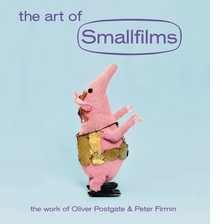 The Art of Smallfilms
The Art of Smallfilms
The Work of Oliver Postgate & Peter Firmin
Published by Four Corners Books.
Edited by Jonny Truck, Richard Embray. Introduction by Stewart Lee. Foreword by Daniel Postgate.
Postgate & Firmin produced some of the best-loved British children’s television of the 1960s and '70s, including Bagpuss, The Clangers and Ivor the Engine
PUBLISHER
Four Corners Books
BOOK FORMAT
Hardcover, 10.25 x 11 in. / 304 pgs / 300 color / 20 bw.
PUBLISHING STATUS
Pub Date 2/24/2015
Active
DISTRIBUTION
D.A.P. Exclusive
Catalog: SPRING 2015 p. 59
PRODUCT DETAILS
ISBN 9781909829022 TRADE
List Price: $45.00 CAD $60.00
AVAILABILITY
In stock
in stock $45.00 Free Shipping UPS GROUND IN THE CONTINENTAL U.S. |
 Earthquakes, Mudslides, Fires & Riots: California and Graphic Design, 1936-1986
Earthquakes, Mudslides, Fires & Riots: California and Graphic Design, 1936-1986
Published by Metropolis Books.
By Louise Sandhaus. Contributions by Lorraine Wild, Denise Gonzales Crisp, Michael Worthington. Designed by Louise Sandhaus.
The essential record of America’s most American design movement, in a form that perfectly matches its content. — Michael Beirut
PUBLISHER
Metropolis Books
BOOK FORMAT
Hardcover, 7.5 x 10 in. / 432 pgs / 275 color.
PUBLISHING STATUS
Pub Date 11/30/2014
Active
DISTRIBUTION
D.A.P. Exclusive
Catalog: FALL 2014 p. 5
PRODUCT DETAILS
ISBN 9781938922619 TRADE
List Price: $55.00 CAD $72.50
AVAILABILITY
Out of stock
STATUS: Out of stock Temporarily out of stock pending additional inventory. |
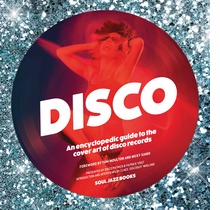 Disco
Disco
An Encyclopedic Guide to the Cover Art of Disco Records
Published by Soul Jazz Books.
Edited by Disco Patrick & Patrick Vogt.
An encyclopedic guide to the cover art of disco
PUBLISHER
Soul Jazz Books
BOOK FORMAT
Hardcover, 12 x 12 in. / 360 pgs / 600 color.
PUBLISHING STATUS
Pub Date 11/30/2014
Out of print
DISTRIBUTION
D.A.P. Exclusive
Catalog: FALL 2014 p. 56
PRODUCT DETAILS
ISBN 9780957260023 TRADE
List Price: $19.95 CAD $27.95
AVAILABILITY
Not available
STATUS: Out of print | 00/00/00 For assistance locating a copy, please see our list of recommended out of print specialists |
 Bruce Davidson: Subway
Bruce Davidson: Subway
Published by Aperture.
Introduction by Fred Brathwaite a.k.a. Fab 5 Freddy. Text by Bruce Davidson. Afterword by Henry Geldzahler.
Bruce Davidson's groundbreaking Subway, first published by Aperture in 1986, has garnered critical acclaim both as a documentation of a unique moment in the cultural fabric of New York City and for its phenomenal use of extremes of color and shadow set against flash-lit skin. In Davidson's own words, “the people in the subway, their flesh juxtaposed against the graffiti, the penetrating effect of the strobe light itself, and even the hollow darkness of the tunnels, inspired an aesthetic that goes unnoticed by passengers who are trapped underground, hiding behind masks and closed off from each other.” In this third edition of what is now a classic of photographic literature, a sequence of 118 (including 25 previously unpublished) images transport the viewer through a landscape at times menacing, and at other times lyrical and soulful. The images present the full gamut of New Yorkers, from weary straphangers and languorous ladies in summer dresses to stalking predators and homeless persons. Davidson's accompanying text tells the story behind the images, clarifying his method and dramatizing his obsession with the subway, its rhythms and its particular madness.
Bruce Davidson (born 1933) is considered one of America's most influential documentary photographers. He began taking photographs when he was ten, and studied at the Rochester Institute of Technology and the Yale University School of Design. In 1958 he became a member of Magnum Photos, and in 1962 he received a Guggenheim Fellowship to document the civil rights movement. After a solo exhibition at The Museum of Modern Art in 1963, Davidson spent two years photographing in Harlem, resulting in the book East 100th Street. In 1980, after living in New York City for 23 years, Davidson began Subway, his startling color essay of urban life.
PUBLISHER
Aperture
BOOK FORMAT
Hardcover, 11.75 x 11.5 in. / 144 pgs / 118 color.
PUBLISHING STATUS
Pub Date 9/30/2011
No longer our product
DISTRIBUTION
Contact Publisher
Catalog:
PRODUCT DETAILS
ISBN 9781597111942 TRADE
List Price: $65.00 CAD $75.00
AVAILABILITY
Not Available
 Reading Andy Warhol
Reading Andy Warhol
Author Illustrator Publisher
Published by Hatje Cantz.
Edited by Nina Schleif. Text by Marianne Dobner, Burcu Dogramaci, Simone Förster, Birgitta Heid, Lucy Mulroney, Susan M. Rossi-Wilcox, Anna Rühl, Nina Schleif, Jordan Troeller, Reva Wolf, Matt Wrbican.
Warhol as publisher, author, book artist and illustrator
PUBLISHER
Hatje Cantz
BOOK FORMAT
Hardcover, 8.75 x 11.25 in. / 304 pgs / 300 color.
PUBLISHING STATUS
Pub Date 2/28/2014
Active
DISTRIBUTION
D.A.P. Exclusive
Catalog: SPRING 2014 p. 66
PRODUCT DETAILS
ISBN 9783775737074 TRADE
List Price: $60.00 CAD $79.00
AVAILABILITY
Out of stock
STATUS: Out of stock Temporarily out of stock pending additional inventory. |
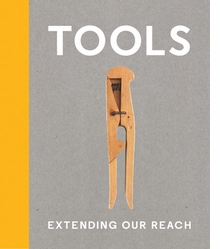 Tools: Extending Our Reach
Tools: Extending Our Reach
Published by Cooper Hewitt, Smithsonian Design Museum.
Text by Cara McCarty, Matilda McQuaid.
An unprecedented survey of tools throughout human history and their role at the forefront of design
PUBLISHER
Cooper Hewitt, Smithsonian Design Museum
BOOK FORMAT
Hardcover, 8 x 9.5 in. / 176 pgs / 200 color.
PUBLISHING STATUS
Pub Date 2/24/2015
Active
DISTRIBUTION
D.A.P. Exclusive
Catalog: FALL 2014 p. 179
PRODUCT DETAILS
ISBN 9780910503778 TRADE
List Price: $29.95 CAD $39.95
AVAILABILITY
In stock
in stock $29.95 Free Shipping UPS GROUND IN THE CONTINENTAL U.S. |
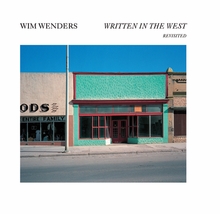 Wim Wenders: Written in the West, Revisited
Wim Wenders: Written in the West, Revisited
Published by D.A.P./Distributed Art Publishers.
Text by Wim Wenders. Interview by Alain Bergala.
In late 1983, looking for the subjects and locations that would bring the desolate landscape of the American West to life for his iconic film Paris, Texas, German filmmaker Wim Wenders took his Makina Plaubel 6 x 7 camera on the road. Driving through Texas, Arizona, New Mexico and California, Wenders was captivated by the unique, saturated, colorful light of the vast, wild landscape of the American West--even in the 20th century, a land associated with cowboys and outlaws, and suffused with the mythology of the frontier. The series he produced, Written in the West, was first exhibited in 1986 at the Centre Pompidou in Paris, and first published in 2000.
Roughly three decades later, in this expanded edition, Wenders adds 15 new images of the sleepy town that gave the movie its name--though no footage was ever actually shot there. Made with a Fuji 6 x 4.5 camera, the new photographs are poetic documents of an abiding fascination and a search for personal memories. Together, they add an essential new chapter to Wenders' classic Written in the West, now Revisited.
Over the past four decades, through films like Paris, Texas (1984), Wings of Desire (1987), Buena Vista Social Club (1999) and Pina (2011), Wim Wenders (born 1945) has distinguished himself as one of the leading lights of New German Cinema and one of the great directors in contemporary film. Wenders has had an equally distinguished career in photography; his photographs are exhibited and collected internationally.
PUBLISHER
D.A.P./Distributed Art Publishers
BOOK FORMAT
Hardcover, 9.75 x 9 in. / 108 pages / 58 color.
PUBLISHING STATUS
Pub Date 6/23/2015
Out of stock indefinitely
DISTRIBUTION
D.A.P. Exclusive
Catalog: FALL 2015 p. 20
PRODUCT DETAILS
ISBN 9781938922848 TRADE
List Price: $39.95 CAD $53.95
AVAILABILITY
Not available
STATUS: Out of stock indefinitely. |
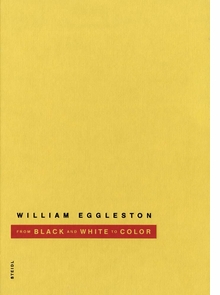 William Eggleston: From Black and White to Colour
William Eggleston: From Black and White to Colour
Published by Steidl.
Text by Thomas Weski.
At the end of the 1950s William Eggleston began to photograph around his home in Memphis using black-and-white 35mm film. Fascinated by the photography of Henri Cartier-Bresson, Eggleston declared at the time: "I couldn't imagine doing anything more than making a perfect fake Cartier-Bresson." Eventually Eggleston developed his own style which later shaped his seminal work in color-an original vision of the American everyday with its icons of banality: supermarkets, diners, service stations, automobiles and ghostly figures lost in space. From Black and White to Color includes some exceptional as-yet-unpublished photographs, and displays the evolution, ruptures and above all the radicalness of Eggleston's work when he began photographing in color at the end of the 1960s. Here we discover similar obsessions and recurrent themes as present in his early black-and-white work including ceilings, food, and scenes of waiting, as well as Eggleston's unconventional croppings-all definitive traits of the photographer who famously proclaimed, "I am at war with the obvious."
PUBLISHER
Steidl
BOOK FORMAT
Hardcover, 7 x 9.5 in. / 192 pgs / illustrated throughout.
PUBLISHING STATUS
Pub Date 10/31/2014
Out of stock indefinitely
DISTRIBUTION
D.A.P. Exclusive
Catalog: FALL 2014 p. 12
PRODUCT DETAILS
ISBN 9783869307930 TRADE
List Price: $45.00 CAD $60.00
AVAILABILITY
Not available
STATUS: Out of stock indefinitely. |
the source for books on art & culture
CUSTOMER SERVICE
orders@artbook.com
212 627 1999 ext 202
M-F 10-6 EST
Ingram Customer Care
800-937-8200 option 3
orders@dapinc.com
NEW YORK
Showroom by Appointment Only
75 Broad Street, Suite 630
New York NY 10004
Tel 212 627 1999
LOS ANGELES
Showroom by Appointment Only
818 S. Broadway, Suite 700
Los Angeles, CA 90014
Tel. 323 969 8985
ARTBOOK LLC
D.A.P. | Distributed Art Publishers, Inc.
All site content Copyright C 2000-2023 by Distributed Art Publishers, Inc. and the respective publishers, authors, artists. For reproduction permissions, contact the copyright holders.
The D.A.P. Catalog
www.artbook.com

